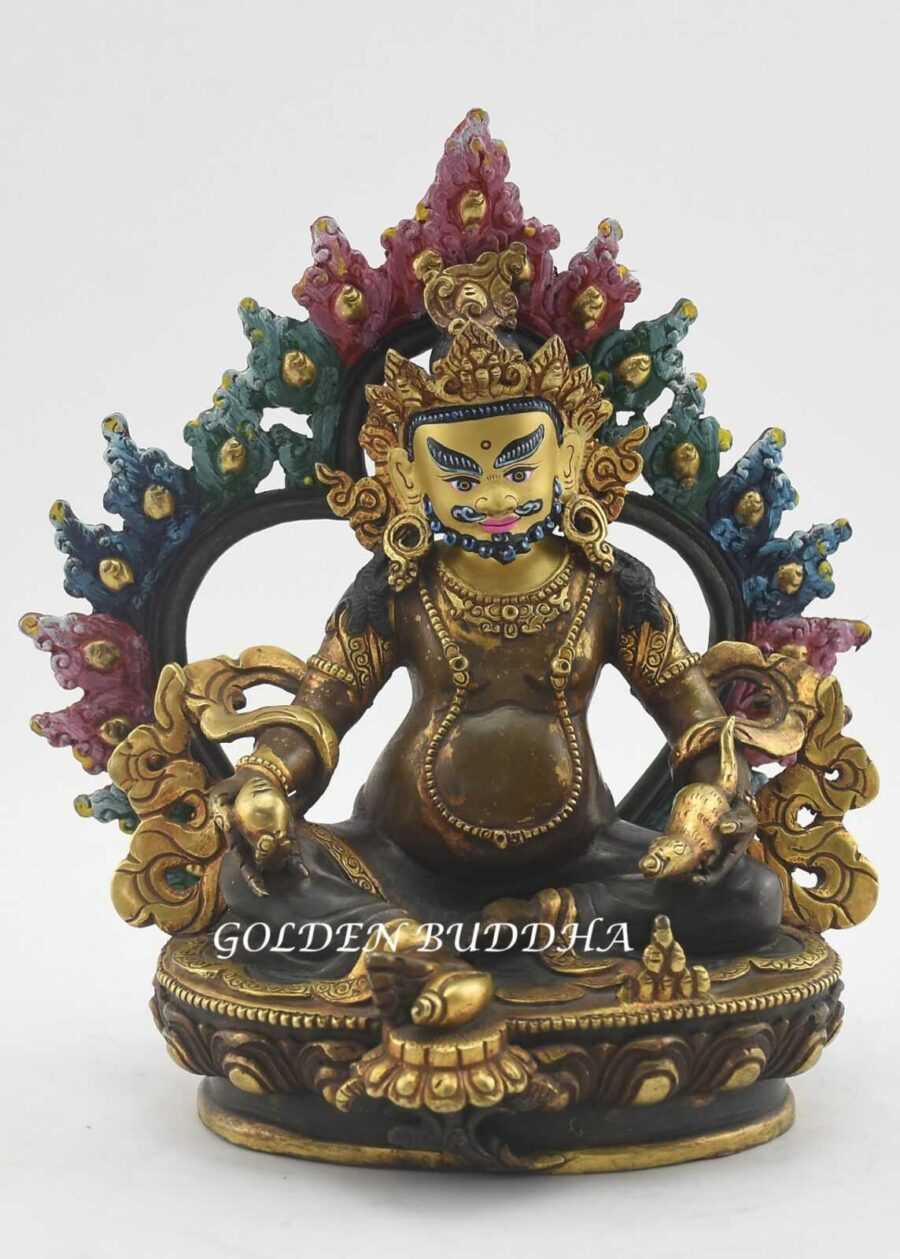Our fully framed Nepali Jambhala sculpture is hand face painted in intricate detail. Additionally, for a small statue, the carving is extremely detailed and reflective of the lost wax sculpting method. The frame is removable and can be adjusted to suit the preference of the buyer. Additionally, Yellow Jambhala wears the crown and jewels of a Bodhisattva. At the request of the buyer, we can fit his crown and jewels with turquoise and red coral stones at no extra cost.
A prominent feature of this Nepali Jambhala sculpture is his mongoose Nehulay who is always perched on his left forearm. Nehulay is a metaphor for Jambhala’s mastery over the serpents (nagas). Nehulay is also always spitting forth precious jewels to help the alleviate the pains of poverty.
Furthermore, Jambhala has a bowl of medicinal fruits called “bijapuraka” near his left foot. His left foot is pulled in and his right leg is partially extended in panhandle position because he is always ready to come to the assistance of devotees.
Nepali Jambhala Sculpture for Wealth Creation
Our Nepali Jambhala sculpture is an embodiment of one of the Dhyani Buddhas named Ratnasambhava. Additionally, Yellow Jambhala is the most popular of the 5 variations of Jambhala. Having originated from the Hindu God Kubera, the Jamblalas are sought after by devotees seeking wealth. However, the Buddhist Jambhala is associated with the wholesome attribute of equanimity. As such, he is pursuing the elimination of poverty through wealth creation.
All of the Jambhalas, including this Yellow Jambhala sculpture represent the Dharmapala who are the protectors of the Dharma. Additionally, Yellow Jambhala was personally invited to become a Dharmapala by Gautama Buddha himself. This was in show of gratitude for protecting the Buddha as he gave a sermon. Click here to learn more about the five Jambhalas.













Reviews
There are no reviews yet.